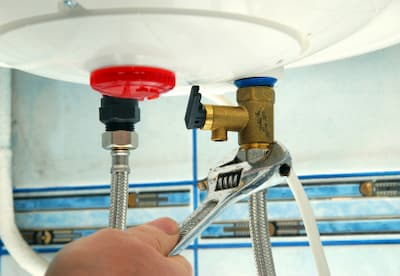Important Care Tips for Your Home's Hot Water SystemEffective Techniques for Caring for Your Home's Hot Water System
Important Care Tips for Your Home's Hot Water SystemEffective Techniques for Caring for Your Home's Hot Water System
Blog Article
Have you been trying to find help and advice on Tips on Maintaining a Water Heater?

Hot water is important for day-to-day comfort, whether it's for a rejuvenating shower or washing meals. To guarantee your hot water system runs effectively and lasts much longer, regular upkeep is vital. This short article gives practical suggestions and understandings on just how to keep your home's hot water system to avoid interruptions and pricey repairs.
Introduction
Keeping your home's hot water system may appear overwhelming, but with a few basic actions, you can ensure it operates smoothly for several years ahead. This guide covers every little thing from understanding your hot water system to do it yourself upkeep tips and understanding when to hire specialist help.
Value of Keeping Your Hot Water System
Routine upkeep not only prolongs the life-span of your warm water system but likewise ensures it operates successfully. Neglecting maintenance can cause decreased effectiveness, greater power bills, and even premature failing of the system.
Indicators Your Hot Water System Needs Maintenance
Understanding when your warm water system requires focus can prevent significant issues. Watch out for indicators such as irregular water temperature, unusual sounds from the heating system, or rusty water.
Understanding Your Hot Water System
Before diving into upkeep jobs, it's handy to recognize the fundamental parts of your warm water system. Typically, this includes the water heater itself, pipes, anode rods, and temperature controls.
Regular Monthly Upkeep Tasks
Routine regular monthly checks can assist capture small concerns prior to they intensify.
Flushing the Water Heater
Purging your hot water heater eliminates sediment buildup, improving efficiency and lengthening its life.
Monitoring and Replacing Anode Rods
Anode rods prevent deterioration inside the container. Checking and replacing them when worn out is crucial.
Inspecting and Readjusting Temperature Level Setups
Readjusting the temperature level settings ensures optimum efficiency and safety.
DIY Tips for Upkeep
You can carry out several upkeep jobs yourself to maintain your warm water system in top condition.
Looking for Leakages
Consistently evaluate pipes and connections for leakages, as these can cause water damage and greater expenses.
Examining Stress Relief Valves
Examining the pressure relief valve guarantees it works correctly and protects against extreme pressure buildup.
Shielding Pipes
Insulating warm water pipelines minimizes heat loss and can conserve energy.
When to Call a Specialist
While DIY maintenance is valuable, some issues require professional experience.
Complex Concerns Requiring Specialist Help
Instances include major leakages, electrical issues, or if your water heater is continually underperforming.
Regular Professional Upkeep Advantages
Expert maintenance can include complete inspections, tune-ups, and ensuring compliance with security standards.
Final thought
Normal upkeep of your home's warm water system is crucial for effectiveness, longevity, and price financial savings. By complying with these suggestions and knowing when to look for expert help, you can ensure a reliable supply of warm water without unexpected disturbances.
Water Heater Maintenance Tips
Test the TPR Valve
Shut off the power and the cold-water supply valve. Place a bucket under the pipe connected to the temperature-pressure-release (TPR) valve on the top or side of the tank. (This valve opens if the tank pressure gets too high.) Lift the valve’s tab to let some water out, then let go. If water keeps flowing, drain the tank partway, unscrew the old valve with a pipe wrench, and install a new one. Check the Anode Rod
Put a hose to the tank’s drain cock and let out a few gallons of water. Now fit a 1 1/16-inch socket onto the rod’s hex head on top of the heater (or under its top plate) and unscrew the rod. If it’s less than ½ inch thick or coated with calcium, buy a new one, wrap its threads with Teflon tape, put it back in the tank, and tighten securely. Use this segmented rod if headroom above the tank is limited. Drain the Tank and Wash Out Sediment
Drain the remaining water in the tank into the bucket, then stir up the sediment on the tank’s bottom by briefly opening the cold-water supply valve. Drain and repeat until clean water comes out of the hose. Close the drain cock, refill the tank, and turn its power back on. Adjust the Temperature
Find the temperature dial on the side of the tank and unscrew its cover. Adjust the dial to 120 degrees using a flathead screwdriver. For every 10 degrees the temperature is lowered, you can expect to save up to 5 percent in energy costs. Turn the water heater off or the thermostat down to its lowest setting if you plan to be away from home for more than three days. Insulate the Pipes
Buy some self-sticking 3/8-inch-thick foam pipe insulation that matches the pipes’ diameter. Slide the foam over the hot-and cold-water pipes as far as you can reach. Insulating the cold-water pipe prevents condensation in summer. Peel the tape and squeeze the insulation closed. If the pipe is 6 inches or less from the flue, cover it with 1-inch-thick unfaced fiberglass pipe wrap. https://www.thisoldhouse.com/plumbing/21016402/how-to-maintain-a-water-heater

As a passionate reader about What Kind of Maintenance Do Water Heaters Need?, I thought sharing that portion was worthwhile. Sharing is good. Helping others is fun. I am grateful for being here. Please pay a visit to our website back soon.
Get A Quote Report this page